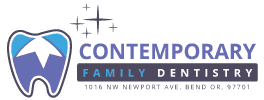Introduction: After Tooth Extraction
This comprehensive guide will walk you through the essential steps and considerations for optimal healing after tooth extraction. Experiencing a tooth extraction can be necessary to maintain oral health, but proper post-extraction care is crucial for a smooth and speedy recovery.
Before You Leave the Dental Office
Before you leave the dental office, you must clearly understand the immediate post-extraction care instructions provided by your dentist or oral surgeon. Make sure to ask any questions and clarify any concerns before heading home. Additionally, it’s important to follow any prescribed medication regimen and schedule a follow-up appointment if necessary. Taking these steps can help prevent complications and ensure a successful recovery process.
Immediate Post-Extraction Care
Bite on Gauze:
Immediately after the extraction, your dentist will place gauze over the extraction site. Bite firmly on the gauze for at least 30 minutes to help control bleeding and promote clot formation. Change the gauze as needed and avoid vigorous rinsing or spitting to prevent blood clot dislodging.
Take Prescribed Medications:
If your dentist prescribes medication, take it as directed to manage pain and prevent infection. Following your dentist’s instructions for post-extraction care, such as avoiding certain foods and activities, is also important for a smooth recovery. Attending follow-up appointments is essential to ensure proper healing and promptly address any concerns.
Apply Ice Packs:
Apply ice packs to the outside of your face for 20 minutes on, then 20 minutes off for the first 24 hours to reduce swelling and discomfort. Be sure to wrap the ice pack in a cloth or towel to protect your skin from frostbite. Continue this cycle for the first 24 hours.
Managing Discomfort and Swelling
Pain Management After Tooth Extraction
Take prescribed pain medication as directed by your dentist to manage any discomfort. If you experience severe pain or swelling that does not improve, contact your dentist immediately for further guidance. As recommended by your dentist, over-the-counter pain relievers can help manage post-extraction discomfort. Avoid aspirin if there is any concern about increased bleeding.
Swelling Reduction Techniques:
Elevate your head with an extra pillow while sleeping to minimize swelling. Applying an ice pack to the affected area for 20 minutes on, then 20 minutes off, can also help reduce swelling. Remember to avoid hot liquids and foods and vigorous rinsing or spitting to prevent dislodging the blood clot and causing further complications.
74% of all adults have had a tooth Extraction. 84% of Adults have at least one or more fillings.
Caring for the Extraction Site
Oral Hygiene:
Continue with your regular oral hygiene routine, but avoid the extraction site for the first 24 hours for proper healing. After the first 24 hours, gently rinse with warm salt water to keep the area clean and promote healing. Remember to avoid using straws and smoking, as these can dislodge the blood clot and delay healing.
Avoid Certain Foods: After Tooth Extraction
Stick to soft foods and liquids during the initial days post-extraction. Avoid hot, spicy, and hard foods that irritate the extraction site and cause discomfort or infection. It’s important to give your mouth time to heal properly to prevent complications.
Potential Complications and When to Seek Help
Signs of Infection:
Be vigilant for signs of infection, such as increasing pain, swelling, redness, or discharge. If you suspect an infection, contact your dentist promptly to prevent further complications. Infections can be easily treated with antibiotics if caught early, so it’s important not to delay seeking help.
Persistent Bleeding:
While some oozing is normal initially, persistent bleeding beyond the first few hours should be reported to your dentist to ensure proper healing. Excessive bleeding could indicate a problem that needs to be addressed promptly by a dental professional.
Follow-up Appointments and Long-Term Care
Attend Follow-up Appointments:
Attend scheduled follow-up appointments to allow your dentist to monitor the healing process and address concerns.
Long-Term Oral Care:
As you recover, maintain good oral hygiene practices, and consider discussing tooth replacement options with your dentist if the extraction leaves a gap in your smile.
Don’ts After Tooth Extraction
Below are some things to avoid while you’re healing.
- Don’t drink with a straw, suck on candy or ice pops, slurp soups or other liquids, rinse your mouth vigorously, or smoke for 24 hours. These things create suction in the mouth. This may dislodge the blood clot.
- Don’t drink alcohol or use mouthwash containing alcohol for 24 hours. Alcohol use may delay healing.
- Don’t spit. Spitting may loosen or dislodge the clot.
When to get medical advice After Tooth Extraction
Get in touch with your dentist right away if you have any of these:
-
Pain is more severe the day after your extraction.
-
Bleeding gets hard to control.
-
Swelling around the extraction site gets worse.
-
Itching or rashes occur after you take medicine
- Fever, nausea, or vomiting
Conclusion of After Tooth Extraction
Following these post-extraction care guidelines will contribute to a smooth recovery and minimize the risk of complications. Remember, individual healing experiences may vary, so always consult your dentist if you have concerns or questions about your post-extraction care.
FAQs about After Tooth Extraction Care
1. How long does the initial post-extraction care last?
The immediate post-extraction care typically extends for the first 24 to 48 hours. Following your dentist’s instructions during this crucial period is vital for healing.
2. Is bleeding normal after a tooth extraction, and for how long should it last?
Some bleeding is normal immediately after the extraction. Gauze should be bitten for a few hours to promote blood clot formation. If bleeding persists beyond the initial hours, contact your dentist.
3. Can I brush my teeth after a tooth extraction?
It’s important to avoid the extraction site during the first 24 hours. Afterward, you can gently resume brushing your teeth, being careful around the healing area. Your dentist may recommend a saltwater rinse.
4. How can I manage pain after a tooth extraction?
Your dentist may prescribe pain medication; over-the-counter options can also be used as directed. Following the prescribed dosage and completing the course is crucial for effective pain management.
5. When can I resume normal activities after a tooth extraction?
Strenuous activities should be avoided for the first few days to minimize swelling and promote healing. Following your dentist’s recommendations and gradually resuming normal activities based on your recovery progress is essential.
6. What are the signs of infection after a tooth extraction?
Signs of infection may include increasing pain, swelling, redness, or discharge around the extraction site. Contact your dentist promptly for further evaluation and treatment if you suspect an infection.
7. Can I eat normally after a tooth extraction?
Initially, stick to soft foods and liquids. Avoid hot, spicy, and hard foods that may irritate the extraction site. Your dentist will provide specific dietary recommendations based on your case.



